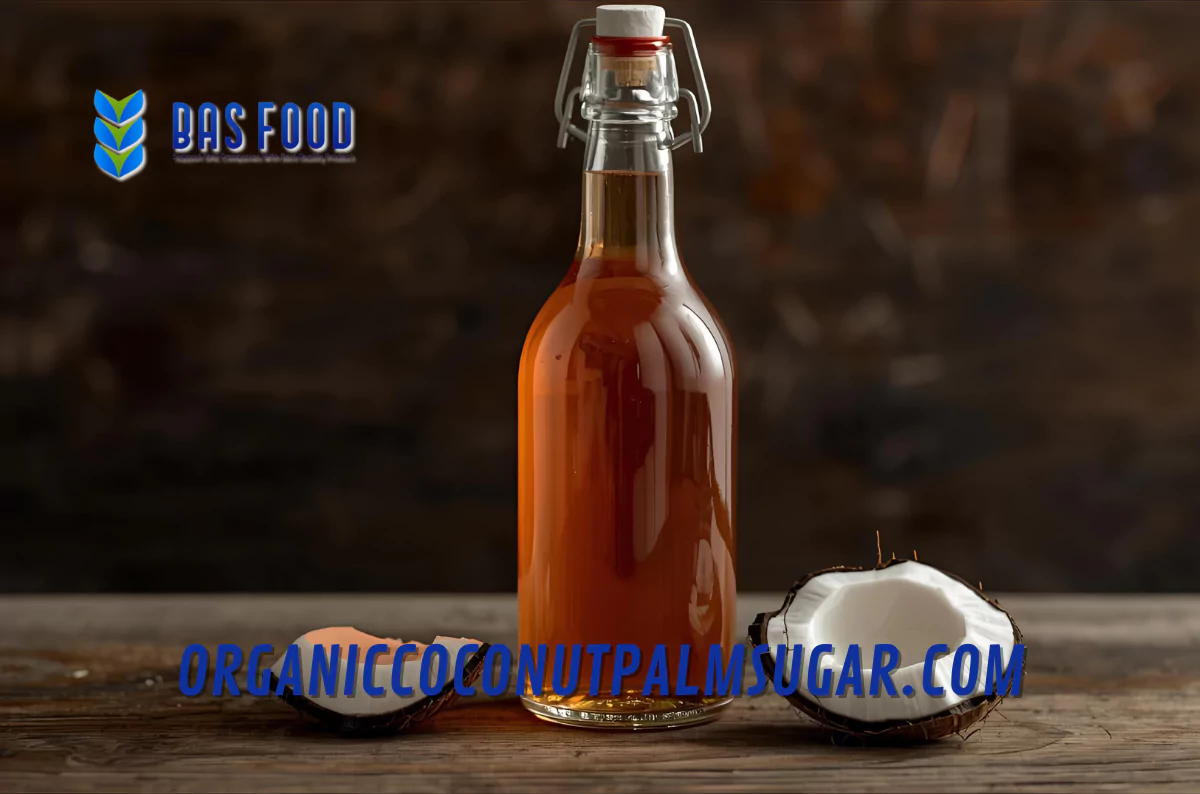Coconut nectar treacle is one of those hidden gems in the world of natural sweeteners. Many people know about honey, maple syrup, or even palm sugar, but few realize how unique coconut treacle is. It comes directly from the sap of coconut blossoms and transforms into a thick, golden-brown syrup with a flavor that’s both rich and slightly caramel-like.
Understanding how coconut nectar treacle is made gives us insight into centuries-old traditions, careful craftsmanship, and the sustainable practices behind its production. In many parts of Southeast Asia, including Indonesia, this sweetener is not only a staple in traditional kitchens but also an increasingly popular export product thanks to its healthier profile compared to refined sugar.

Coconut Sap Collection: The First Step in Treacle Making
The process begins with coconut sap collection, which is the foundation of treacle production. Farmers climb tall coconut trees in the early morning and make precise cuts on the coconut flower stalks. The sap flows slowly into bamboo or plastic containers tied beneath the cut.
Timing is everything. Collectors gather the sap twice a day—morning and late afternoon—because the liquid ferments quickly if left too long. Fresh sap is sweet, clear, and slightly floral. This raw sap is the key ingredient that will later transform into treacle through the traditional cooking process.
Traditional Treacle Process: Turning Sap into Syrup
Once collected, the fresh coconut sap cannot wait. Farmers and producers immediately bring it to cooking facilities, often located near coconut plantations. This marks the start of the traditional treacle process.
The sap is poured into large woks or kettles and heated over a wood fire or gas flame. The liquid begins to simmer, and over several hours, water content evaporates. Stirring is constant to prevent burning and ensure even caramelization. The sap thickens, slowly changing color from pale white to amber and finally to a rich, dark brown treacle.
Natural Sweetener Production: Crafting a Healthier Choice
The making of coconut treacle is a textbook example of natural sweetener production. No artificial chemicals, additives, or preservatives are added during the process. The transformation depends solely on evaporation and natural caramelization.
Because it retains many of the nutrients from fresh coconut sap, treacle is rich in minerals such as potassium, magnesium, zinc, and iron. Its glycemic index is lower compared to refined sugar, making it a preferred option for health-conscious consumers. For this reason, coconut treacle is not just a traditional product—it is a modern alternative for anyone looking for healthier sweeteners.
Flavor, Texture, and Uses of Coconut Nectar Treacle
The final product is thick, sticky, and glossy with a distinctive aroma. Unlike artificial syrups, coconut nectar treacle offers complex flavor notes—sweet, earthy, with a hint of smokiness from the cooking process.
Cooks and bakers use it in various ways. It can sweeten beverages, enrich baked goods, or act as a glaze for savory dishes. In Indonesia and other coconut-producing countries, treacle is also drizzled over rice cakes, pancakes, and desserts. Its versatility is one reason why more chefs and food manufacturers are starting to embrace it.
Sustainability and Community Value Behind Treacle
Learning how coconut nectar treacle is made also reveals its strong ties to sustainability. Coconut trees require little irrigation, thrive in coastal regions, and provide food, shelter, and income for millions of families. Unlike refined sugarcane production, coconut farming has a lighter environmental footprint.
Treacle production supports rural communities. Farmers, collectors, and small-scale producers all play vital roles in the supply chain. Each bottle of coconut nectar treacle sold represents livelihoods sustained and traditions preserved. By choosing natural coconut products, consumers indirectly support sustainable farming practices.
CV Bonafide Anugerah Sentosa: Trusted Supplier of Coconut and Spices
For buyers looking to source coconut treacle or other natural products at scale, CV Bonafide Anugerah Sentosa stands out as a reliable partner. Based in Indonesia, the company has built a strong reputation as both a coconut supplier and a trusted spices supplier.
Their network includes coconut farmers and traditional producers who understand the art of treacle making. By ensuring quality control, sustainable sourcing, and timely export, CV Bonafide Anugerah Sentosa connects the world with authentic Indonesian coconut products. From coconut nectar treacle to spices and fishery goods, the company offers a wide range of commodities trusted by international buyers.
Conclusion: From Sap to Sweetness
The journey of how coconut nectar treacle is made is both simple and remarkable. Starting from coconut sap collection, moving through the traditional treacle process, and ending as a versatile natural sweetener, every step reflects heritage and care.
As global demand for healthier alternatives grows, coconut nectar treacle will continue to gain recognition. It is more than just syrup—it is a bridge between traditional wisdom and modern food culture. And with trusted suppliers like CV Bonafide Anugerah Sentosa, the world can enjoy this sweet treasure straight from Indonesia.
Contact CV Bonafide Anugerah Sentosa how we can provide the best solutions for you. WhatsApp: +62 8213 4505 737, Email: info@bonafideanugerahsentosa.com / bas.mdir@gmail.com.

